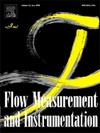A compact and cost effective GRU flow sensor to estimate propellant flow rate and mixture ratio for payload capacity enhancement in Liquid Propellant Rocket Engines
IF 2.3
3区 工程技术
Q2 ENGINEERING, MECHANICAL
引用次数: 0
Abstract
This research focusses on developing a single GRU flow sensor to estimate the volumetric flow rate of propellants, Liquid Hydrogen (fuel) and Liquid Oxygen (oxidiser) and to compute Mixture ratio in Liquid Propellant Rocket Engine (LPRE). This single GRU flow sensor replaces a pair of massive Turbine flow meters in LPRE. This enhances the payload capacity (satellite weight) of the launch vehicle. The raw engine data is collected from the ground hot test of LPRE conducted for a duration of 100 s. The significance of this research is to estimate the flow rate of propellants from the functionally dependent pressure parameters such as Combustion chamber pressure (), Fuel injection pressure () and Oxidiser injection pressure (). The GRU network learns the temporal flow rate dependencies and estimates the fuel and oxidiser flow rate in the three engine operating phases. Mixture Ratio is computed from the GRU estimated flow rate and compared with the actual. Analysis on transient errors in the engine operating phases, estimation performance evaluation with metrices, Root mean square error (RMSE), Mean absolute error (MAE) and R-squared (R2), and performance agreement using Bland Altman approach conducted to assess the estimation effectiveness of GRU flow sensor. An RMSE of 0.3640 and 0.3725 for fuel and oxidiser flow rate respectively and an error less than ±2 % in computed mixture ratio proves that GRU flow sensor estimation is accurate. Additional analysis on weight and cost from literatures show that the hardware model weighs approximately 1.5 kg with a cost benefit of around $71,000. This facilitates a three - fold enhancement in payload capacity of launch vehicle.
为提高液体推进剂火箭发动机有效载荷能力,设计了一种紧凑、经济的GRU流量传感器,用于估算推进剂流量和混合比
本课题的研究重点是开发一种用于估算推进剂、液态氢(燃料)和液态氧(氧化剂)体积流量和计算液体推进剂火箭发动机(LPRE)混合比的单一GRU流量传感器。这种单一的GRU流量传感器取代了LPRE中一对巨大的涡轮流量计。这增强了运载火箭的有效载荷能力(卫星重量)。原始发动机数据采集自LPRE地面热试验,持续时间为100s。本研究的意义在于通过燃烧室压力(PC)、燃油喷射压力(P1)和氧化剂喷射压力(P2)等功能相关的压力参数来估算推进剂的流量。GRU网络学习了时间流量依赖关系,并估计了发动机三个运行阶段的燃料和氧化剂流量。混合比由GRU估计流量计算,并与实际流量进行比较。通过分析发动机运行阶段的瞬态误差,利用指标、均方根误差(RMSE)、平均绝对误差(MAE)和r平方(R2)进行估计性能评价,并采用Bland Altman方法对GRU流量传感器的估计有效性进行评估。燃料流量和氧化剂流量的RMSE分别为0.3640和0.3725,混合比计算误差小于±2%,证明了GRU流量传感器估计是准确的。从文献中对重量和成本的进一步分析表明,硬件模型的重量约为1.5 kg,成本效益约为71,000美元。这有助于将运载火箭的有效载荷能力提高三倍。
本文章由计算机程序翻译,如有差异,请以英文原文为准。
求助全文
约1分钟内获得全文
求助全文
来源期刊

Flow Measurement and Instrumentation
工程技术-工程:机械
CiteScore
4.30
自引率
13.60%
发文量
123
审稿时长
6 months
期刊介绍:
Flow Measurement and Instrumentation is dedicated to disseminating the latest research results on all aspects of flow measurement, in both closed conduits and open channels. The design of flow measurement systems involves a wide variety of multidisciplinary activities including modelling the flow sensor, the fluid flow and the sensor/fluid interactions through the use of computation techniques; the development of advanced transducer systems and their associated signal processing and the laboratory and field assessment of the overall system under ideal and disturbed conditions.
FMI is the essential forum for critical information exchange, and contributions are particularly encouraged in the following areas of interest:
Modelling: the application of mathematical and computational modelling to the interaction of fluid dynamics with flowmeters, including flowmeter behaviour, improved flowmeter design and installation problems. Application of CAD/CAE techniques to flowmeter modelling are eligible.
Design and development: the detailed design of the flowmeter head and/or signal processing aspects of novel flowmeters. Emphasis is given to papers identifying new sensor configurations, multisensor flow measurement systems, non-intrusive flow metering techniques and the application of microelectronic techniques in smart or intelligent systems.
Calibration techniques: including descriptions of new or existing calibration facilities and techniques, calibration data from different flowmeter types, and calibration intercomparison data from different laboratories.
Installation effect data: dealing with the effects of non-ideal flow conditions on flowmeters. Papers combining a theoretical understanding of flowmeter behaviour with experimental work are particularly welcome.
 求助内容:
求助内容: 应助结果提醒方式:
应助结果提醒方式:


